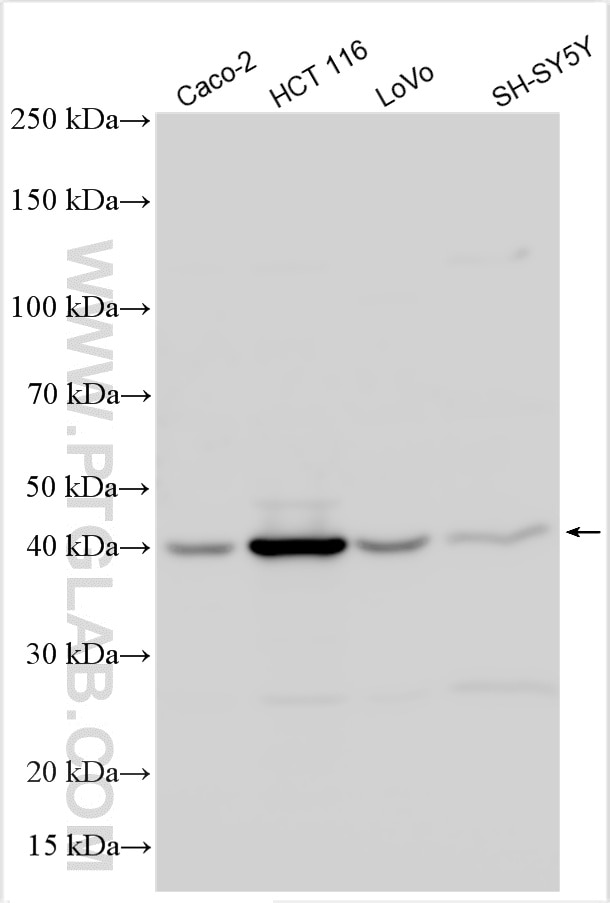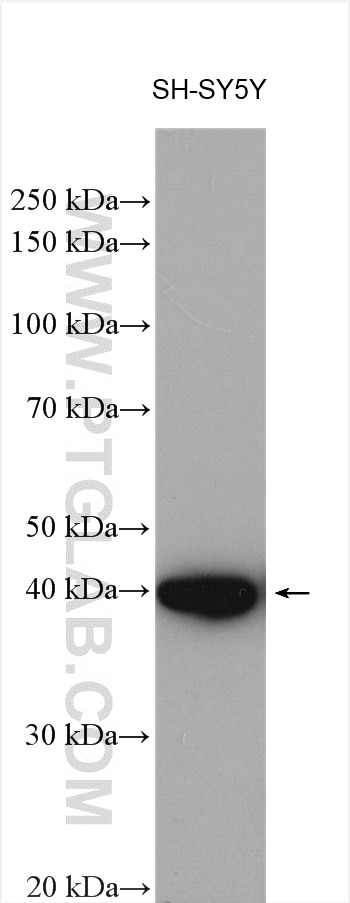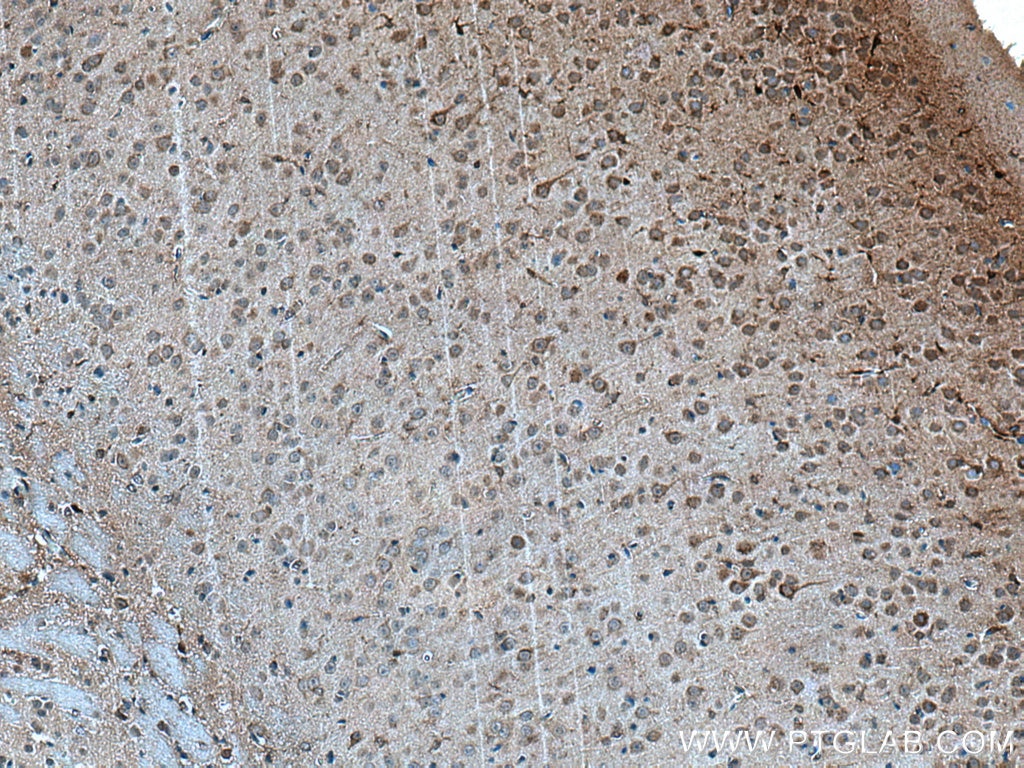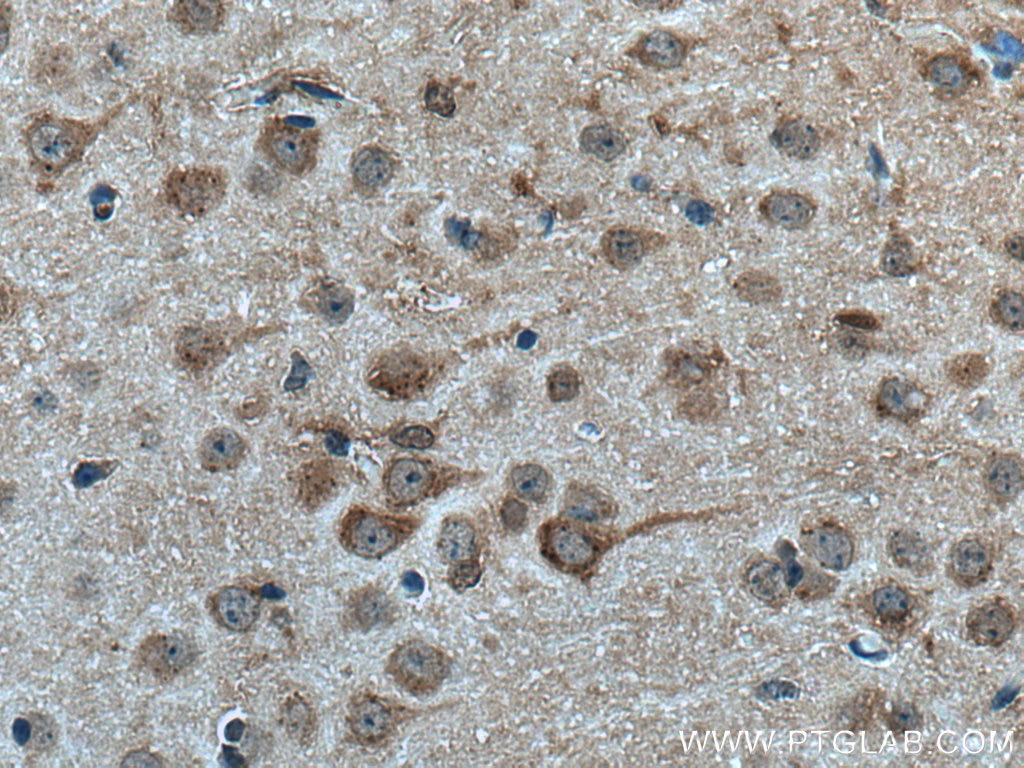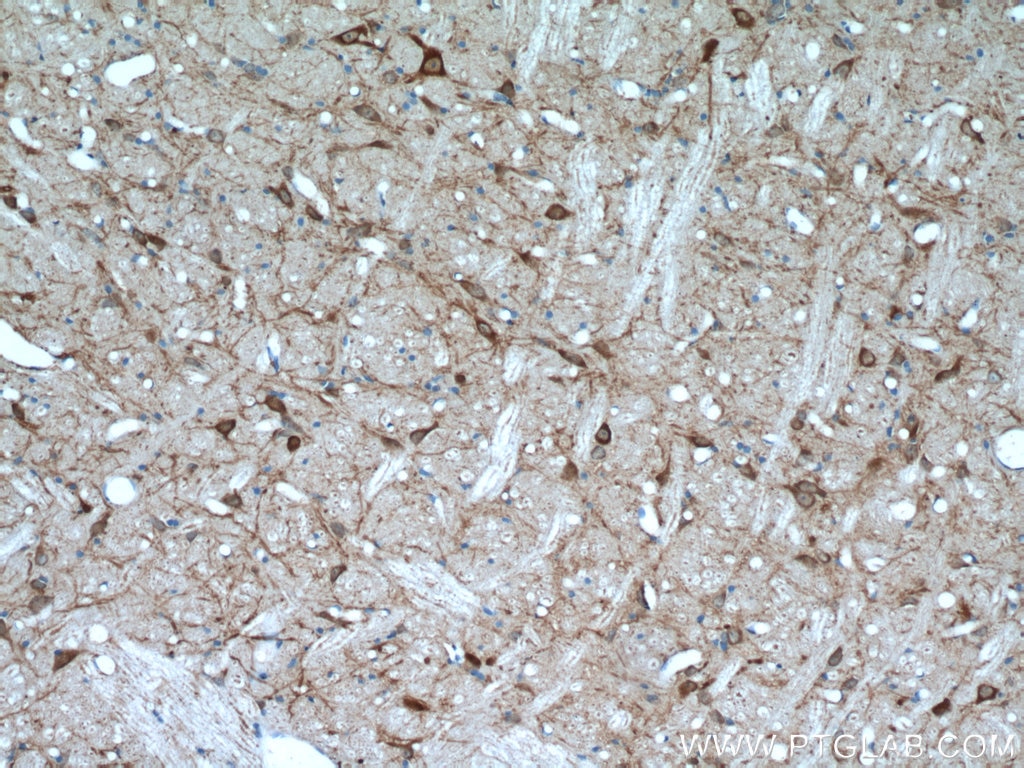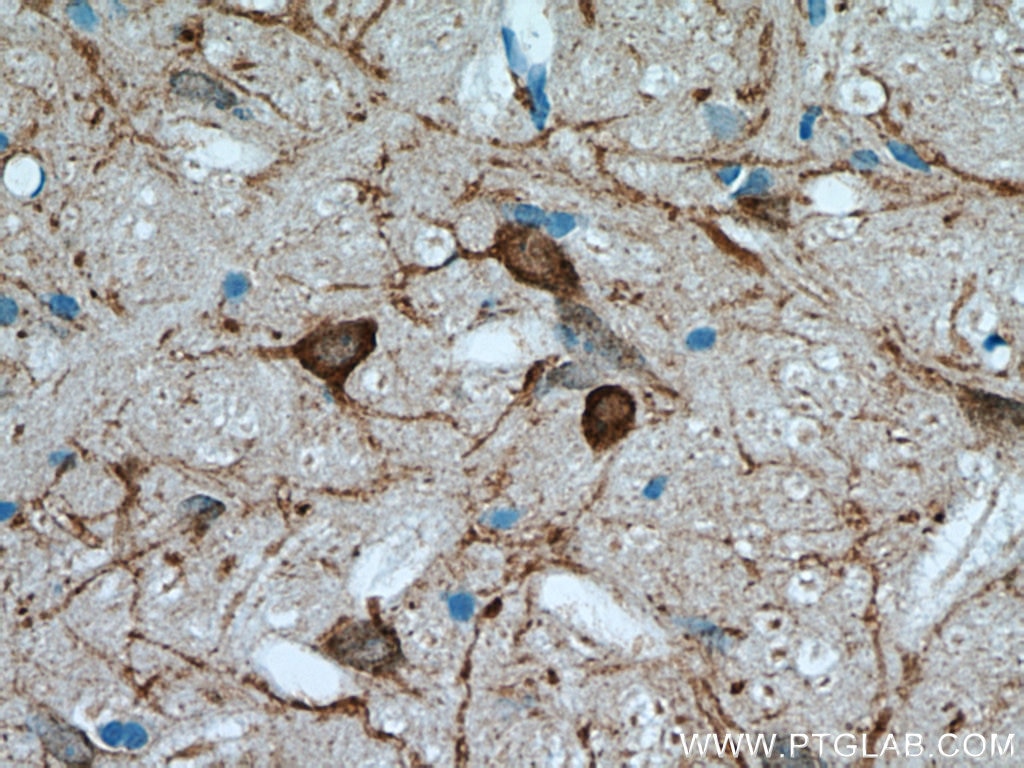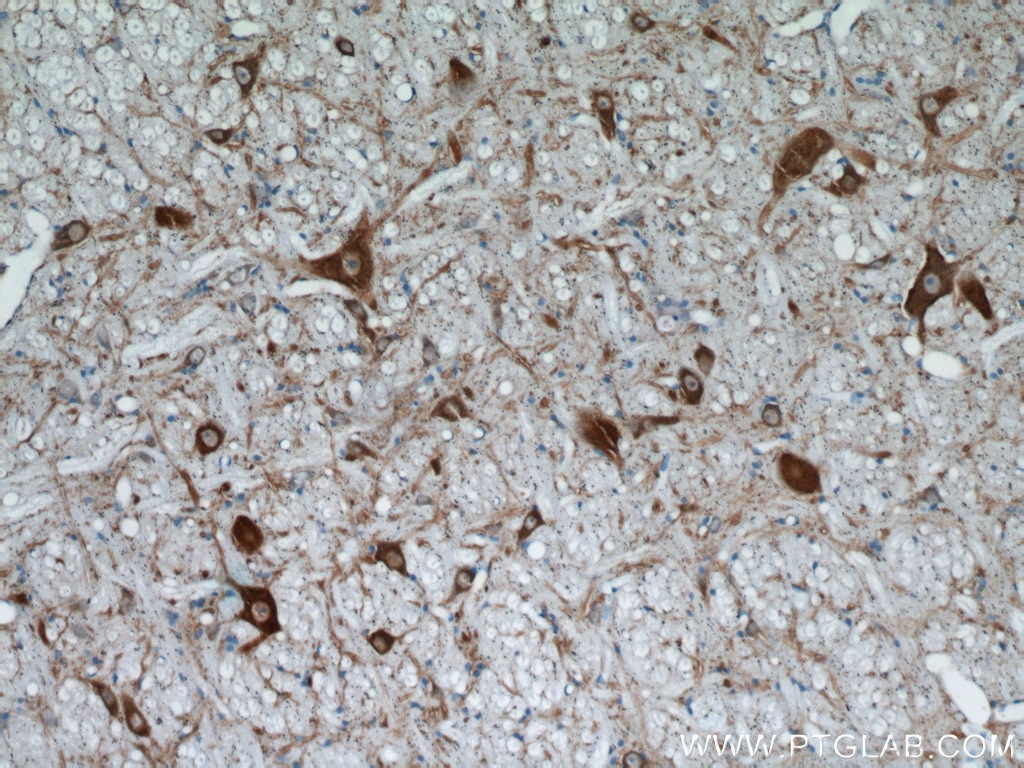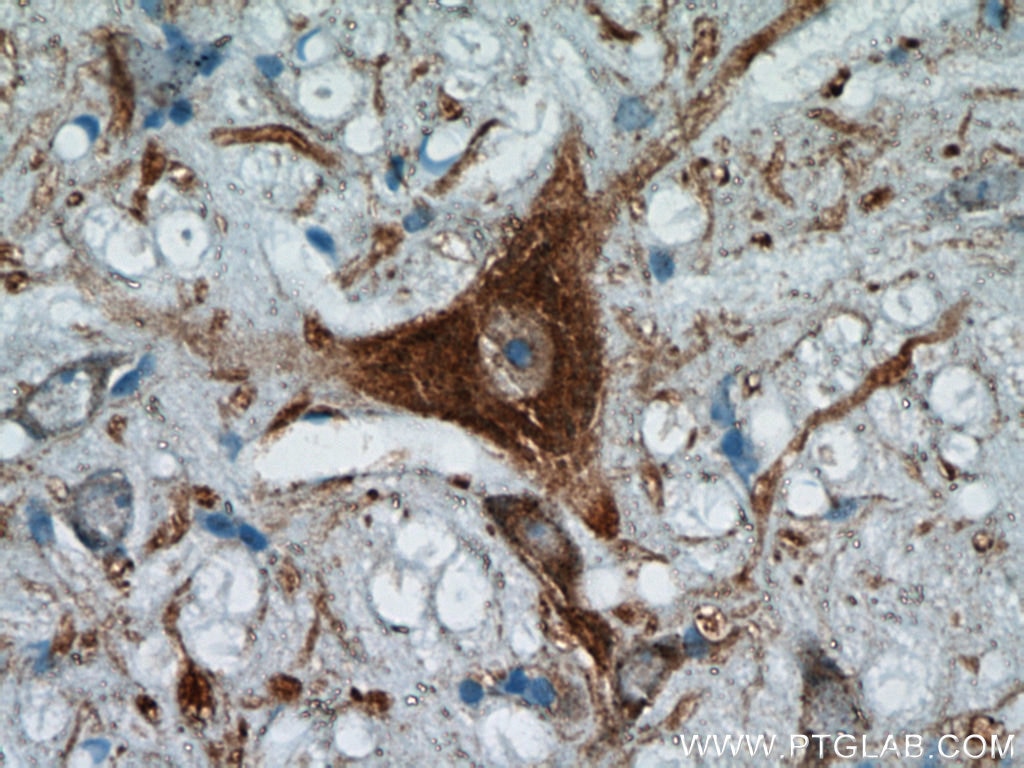- Phare
- Validé par KD/KO
Anticorps Polyclonal de lapin anti-FBXO2
FBXO2 Polyclonal Antibody for WB, IHC, ELISA
Hôte / Isotype
Lapin / IgG
Réactivité testée
Humain, rat, souris
Applications
WB, IHC, IF, IP, CoIP, ELISA
Conjugaison
Non conjugué
N° de cat : 14590-1-AP
Synonymes
Galerie de données de validation
Applications testées
| Résultats positifs en WB | cellules SH-SY5Y, cellules Caco-2, cellules HCT 116 |
| Résultats positifs en IHC | tissu cérébral de souris, tissu cérébral de rat, tissu de cervelet de rat il est suggéré de démasquer l'antigène avec un tampon de TE buffer pH 9.0; (*) À défaut, 'le démasquage de l'antigène peut être 'effectué avec un tampon citrate pH 6,0. |
Dilution recommandée
| Application | Dilution |
|---|---|
| Western Blot (WB) | WB : 1:500-1:2000 |
| Immunohistochimie (IHC) | IHC : 1:50-1:500 |
| It is recommended that this reagent should be titrated in each testing system to obtain optimal results. | |
| Sample-dependent, check data in validation data gallery | |
Applications publiées
| KD/KO | See 4 publications below |
| WB | See 9 publications below |
| IHC | See 6 publications below |
| IF | See 3 publications below |
| IP | See 3 publications below |
| CoIP | See 1 publications below |
Informations sur le produit
14590-1-AP cible FBXO2 dans les applications de WB, IHC, IF, IP, CoIP, ELISA et montre une réactivité avec des échantillons Humain, rat, souris
| Réactivité | Humain, rat, souris |
| Réactivité citée | Humain, souris |
| Hôte / Isotype | Lapin / IgG |
| Clonalité | Polyclonal |
| Type | Anticorps |
| Immunogène | FBXO2 Protéine recombinante Ag6122 |
| Nom complet | F-box protein 2 |
| Masse moléculaire calculée | 33 kDa |
| Poids moléculaire observé | 33-40 kDa |
| Numéro d’acquisition GenBank | BC025233 |
| Symbole du gène | FBXO2 |
| Identification du gène (NCBI) | 26232 |
| Conjugaison | Non conjugué |
| Forme | Liquide |
| Méthode de purification | Purification par affinité contre l'antigène |
| Tampon de stockage | PBS with 0.02% sodium azide and 50% glycerol |
| Conditions de stockage | Stocker à -20°C. Stable pendant un an après l'expédition. L'aliquotage n'est pas nécessaire pour le stockage à -20oC Les 20ul contiennent 0,1% de BSA. |
Informations générales
F-box only protein 2 (FBXO2), also known as FBG1 or Fbs1, is a cytoplasmic protein and ubiquitin ligase with high-mannose glycoprotein specificity. FBXO2 plays a significant role in regulating normal and abnormal neuron functions as a ubiquitin-mediated degrader of several neuron glycoproteins. In addition, it has been reported that FBXO2 targets insulin receptors for degradation by ubiquitin, thereby modulating insulin signaling. Recently, emerging evidence demonstrated that FBXO2 was also strongly associated with the occurrence and development of malignant tumors, including gastric cancer and colorectal cancer. The overexpression of FBXO2 significantly promotes PTC cell proliferation (PMID: 39343799). Lactic acid mediates the selective loading of FBXO2 into SEVs through SORBS3/FLOT1, thereby inducing hepatocyte apoptosis, which is an important mechanism of liver fibrosis caused by myogenic SEVs (PMID: 39879982).
Protocole
| Product Specific Protocols | |
|---|---|
| WB protocol for FBXO2 antibody 14590-1-AP | Download protocol |
| IHC protocol for FBXO2 antibody 14590-1-AP | Download protocol |
| Standard Protocols | |
|---|---|
| Click here to view our Standard Protocols |
Publications
| Species | Application | Title |
|---|---|---|
Sci Rep Quantitative proteomics by SWATH-MS reveals sophisticated metabolic reprogramming in hepatocellular carcinoma tissues. | ||
Front Med (Lausanne) Follicular dendritic cell differentiation is associated with distinct synovial pathotype signatures in rheumatoid arthritis
| ||
Nat Commun Inhibition of histone methyltransferase Smyd3 rescues NMDAR and cognitive deficits in a tauopathy mouse model | ||
World J Gastroenterol F-box only protein 2 exacerbates non-alcoholic fatty liver disease by targeting the hydroxyl CoA dehydrogenase alpha subunit
| ||
Stem Cells Early Wnt Signaling Activation Promotes Inner Ear Differentiation via Cell Caudalization in Mouse Stem Cell-Derived Organoids |
